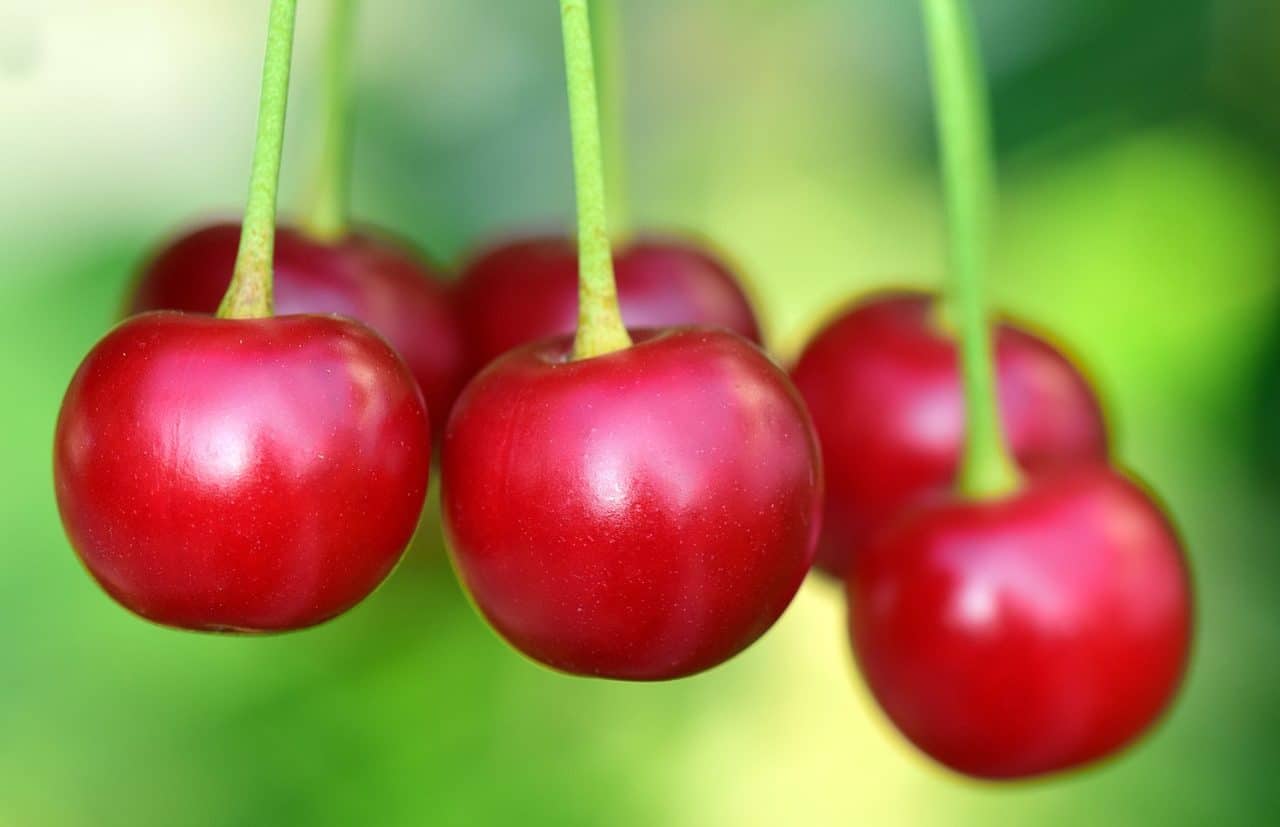
The cherry is the fruit of the cherry tree.
The fruit produced by the cherry tree (a tree that belongs to the Rosaceae family, whose wood is highly valued in the field of cabinetmaking) is called cherry.
Etymology
The word "cherry" has an interesting etymology that dates back to Latin. It comes from the Vulgar Latin "ceresia," which in turn derives from the word "cerasium" in classical Latin. The word "cerasium" was taken from the ancient Greek "kerásion" (κεράσιον).
The introduction of the word "cherry" into Latin is attributed through the influence of Greek traders who brought these fruits to Latin-speaking regions. The phonetic evolution from "cerasium" to "cereza" in Spanish and other Romance languages such as Italian (ciliegia) and French (cerise) is due to the natural transformations of the words over time.
Cherry is a term from the Vulgar Latin ceresĭa , which derives from cerasĭum . This word, in turn, has its origin in the Greek kerásion .
Description
The cherry has a rounded shape and usually has a diameter of about two centimeters, with an extensive hair or nipple. Its color is reddish, quite dark, and its skin is soft. Cherries are drupes : they have a single seed, their endocarp is hard and its mesocarp is soft and fleshy.
Cherries are characterized by the pleasant flavor of their pulp . They can be consumed fresh (raw) or used to make jams, ice cream and other products.
Classification
It is important to mention that there are different varieties of cherries, since the fruit can come from different trees of the Prunus genus. On the one hand we have the common cherry , mollar cherry or sweet cherry , which originates from the sweet cherry or wild cherry tree ( Prunus avium ).
There is also the sour cherry or sour cherry , which comes from the sour cherry tree ( Prunus cerasus ). Both types have their place in cooking and baking, and their choice depends on the characteristics of each recipe. Sweet cherries are ideal to enjoy alone or in desserts, while sour varieties add a distinctive touch to sauces and baked preparations. In any case, they are a delicious addition to the diet and a source of antioxidants and other health-beneficial nutrients.
sweet cherries
- Bing Cherry – Considered one of the most popular sweet cherry varieties, the Bing is large, juicy, and a bright, dark red color. It is perfect to eat fresh or use in desserts and jams;
- Rainier cherry : They are known for their golden yellow color and exceptional sweetness. They are smooth and have a delicate flavor that is often described as almondy. They are usually eaten alone;
- Lambert cherry : They are large, firm and have a dark red to purple color. They are juicy and have a balanced sweet and sour flavor, making them ideal for eating fresh or baking into cakes and pies.
sour cherries
- Montmorency Cherry : They are known for their bright red color and refreshing flavor. They are ideal for making pies, preserves, juices and sauces due to their characteristically acidic flavor profile;
- Morello cherry : they are small, dark red and have an extremely acidic flavor. They are commonly used in the preparation of desserts, such as cakes, compotes and meat sauces;
- English Morello cherry : Similar to the Morello cherry, this variety is dark red and has a pronounced sour flavor. It is used in the preparation of jams, compotes and as a filling in cakes.

Both sweet and sour cherries are used in countless recipes.
Coffee bean shell
The word cherry can also refer to the shell of coffee beans , according to the Royal Spanish Academy ( RAE ). This meaning appears in several Latin American countries, such as Cuba , Colombia , Honduras and Guatemala .
It should be remembered that coffee is the seed of the coffee tree. The outer covering of the seed is referred to, in some areas, as cherry.
